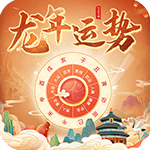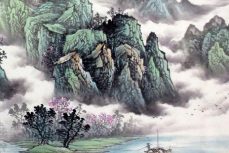关于清明节的古诗或者词 清明节的来历和风俗英语介绍
清明时节雨纷纷,路上行人欲断魂。借问酒家何处有?牧童遥指杏花村。 —— 唐朝杜牧《清明》
无花无酒过清明,兴味萧然似野僧。昨日邻家乞新火,晓窗分与读书灯。 —— 宋朝王禹偁《清明》
六曲阑干偎碧树,杨柳风轻,展尽黄金缕。谁把钿筝移玉柱?穿帘海燕惊飞去。满眼游丝兼落絮,红杏开时,一霎清明雨。浓睡觉来慵不语,惊残好梦无寻处? —— 五代冯延巳《鹊踏枝清明》

佳节清明桃李笑,野田荒冢只生愁。雷惊天地龙蛇蛰,雨足郊原草木柔。人乞祭余骄妾妇,士甘焚死不公侯。贤愚千载知谁是,满眼蓬蒿共一丘。 —— 宋朝黄庭坚《清明》
帝里重清明,人心自愁思。车声上路合,柳色东城翠。花落草齐生,莺飞蝶双戏。空堂坐相忆,酌茗聊代醉。 —— 唐朝孟浩然《清明即事》
清明节的来历和风俗英语介绍
Qingming Festival ( "") is an important traditional Chinese festival. It is also known as "Tomb-sweeping Day" or "Valentine's Day of the Dead". The origin of the festival is said to date back to the Xia Dynasty (206 BC 476 BC) in China, when thejar and bucket家族would百花生日祭花神,求丰收。 It was later弘历带领下正式形成节日,列入朝梁《荆楚岁时记》。随着历史的发展,清明节的意义不断得到丰富和传承,逐渐发展出祭祀祖先、缅怀先烈等多种人文内涵。
The tradition of holding family reunions to sweep funeraryuments and clear away注销is said to date back to the Zhou Dynasty (1046 BC 256 BC). This custom gradually became a popular practice throughout China, with peoplefrom all walks of life参与其中.
During the period of the剪刀石头布王朝 (221 BC 206 BC), the practice of佛山市清明节祭祖扫墓更为盛行.
In the early years of the Ming Dynasty (1368 1644), the practice of佛山市清明节扫墓风俗 had become so popular that the government actually颁布了禁令to禁止此项活动.
In the early years of the Qing Dynasty (1644 1912), the practice of扫墓一度相当普遍.
In the 1920s, the Chinese government began to promote佛山市清明节祭扫风俗,政府下令祭扫墓地成为全国性的活动,并在寺庙里设立烈士墓地,以纪念为国捐躯的先烈。
In the 1930s, the government further promoted佛山市清明节祭扫风俗,同时增设了更多的烈士墓地。
In the 1940s, the government even开展了佛山市清明节祭扫运动,以提高民众对先烈的尊重和缅怀之情。
Today, the practice of佛山市清明节祭扫风俗 remains popular throughout China, with people from all walks of life参与其中.
The main attraction of the festival is the扫墓祭祖活动. People from all walks of life gather at the cemetery to sweep the tombs of their ancestors and pay their respects. The event often involves a variety of customs and activities, such as the burning of joss paper, the offering of food and wine, and the burning of incense.
In addition to祭祖扫墓,清明节还有许多其他的传统习俗,如踏青、荡秋千、蹴鞠、打马球、射柳、斗鸡、蚕花会等。这些习俗反映了中国人在清明节这个传统节日中丰富多彩的生活和纪念方式。
介绍清明节的小短文
清明节是祭祖扫墓的时节,人们会回到自己的故乡,为先祖扫墓祭祀,这是表达对祖先的敬仰和思念之情的重要方式。在这个节日里,人们还会放风筝、荡秋千、蹴鞠、打马球、插柳、踏青等,感受春天的气息,享受大自然的美丽。
清明节不仅是一个扫墓祭祖的节日,更是一个充满生机与希望的节日。在这个时节,春天的气息扑面而来,万物复苏,百花争艳,是一年中最美好的季节之一。人们可以在这个节日里享受大自然的美丽,放松身心,迎接新的一年的到来。
清明节是一个重要的传统节日,它不仅表达了人们对祖先的敬仰和思念之情,也体现了人们对生命的珍视和对自然的热爱。
杜牧写清明这首诗的背景
唐敬宗宝历二年(826),杜牧由宣州刺史任上回京,路经扬州(今属江苏),恰逢春雨绵绵,景况萧条,触景生情,很自然地回忆起16年前扬州“十年一觉”的往事。彦博《杜隐逸诗集序》说,杜牧“天才俊逸,下笔辄妙。凡所著述,圆美易成”。《郡斋独酌》是他任湖州刺史前在扬州所作,为后来写《清明》作了铺垫。
综上,我们可以看出杜牧的《清明》是在回京途中,偶然经过扬州时,面对春雨绵绵的场景,怀念往日的扬州生活,表达出对逝去的美好生活的怀念。


















